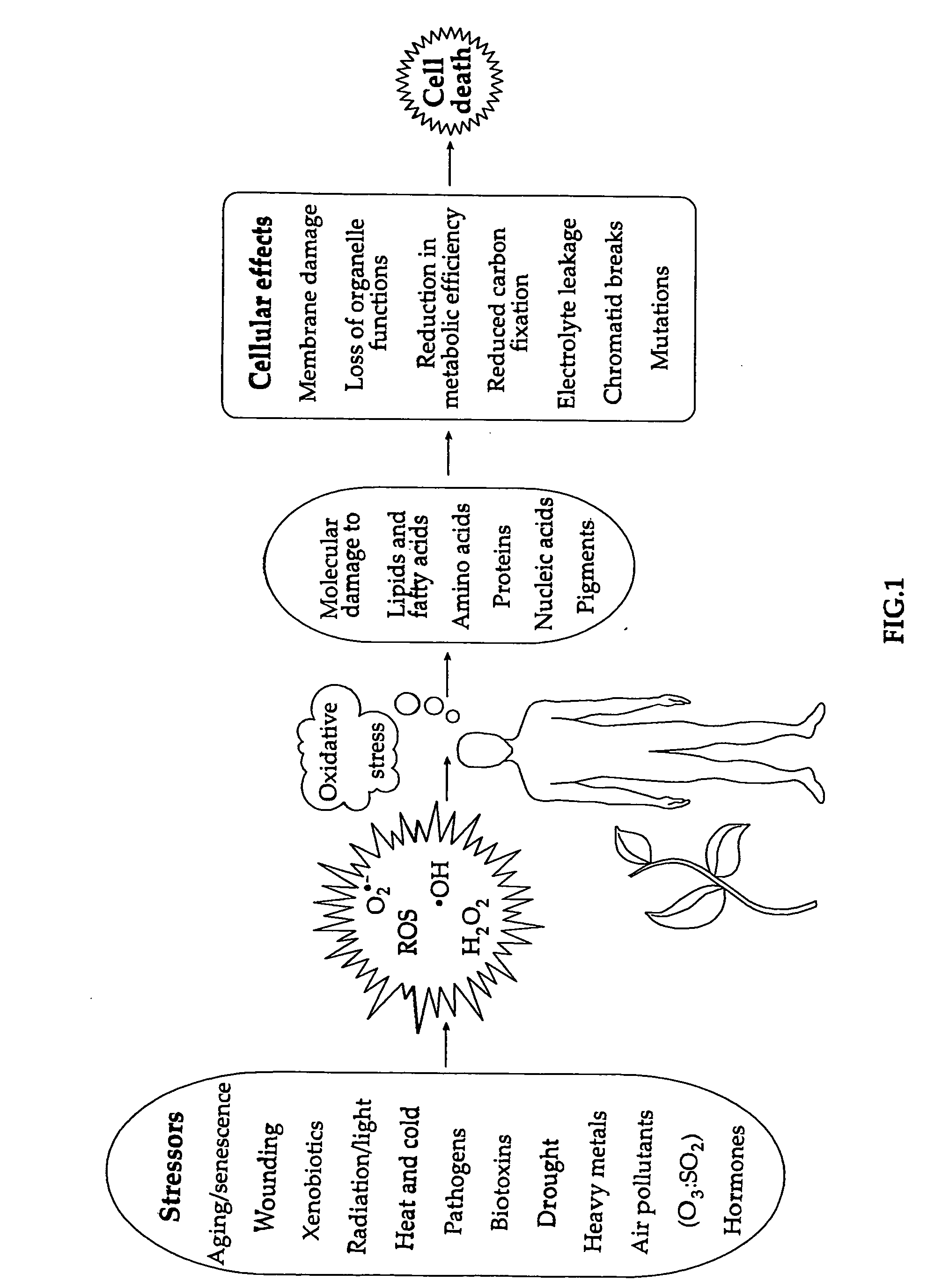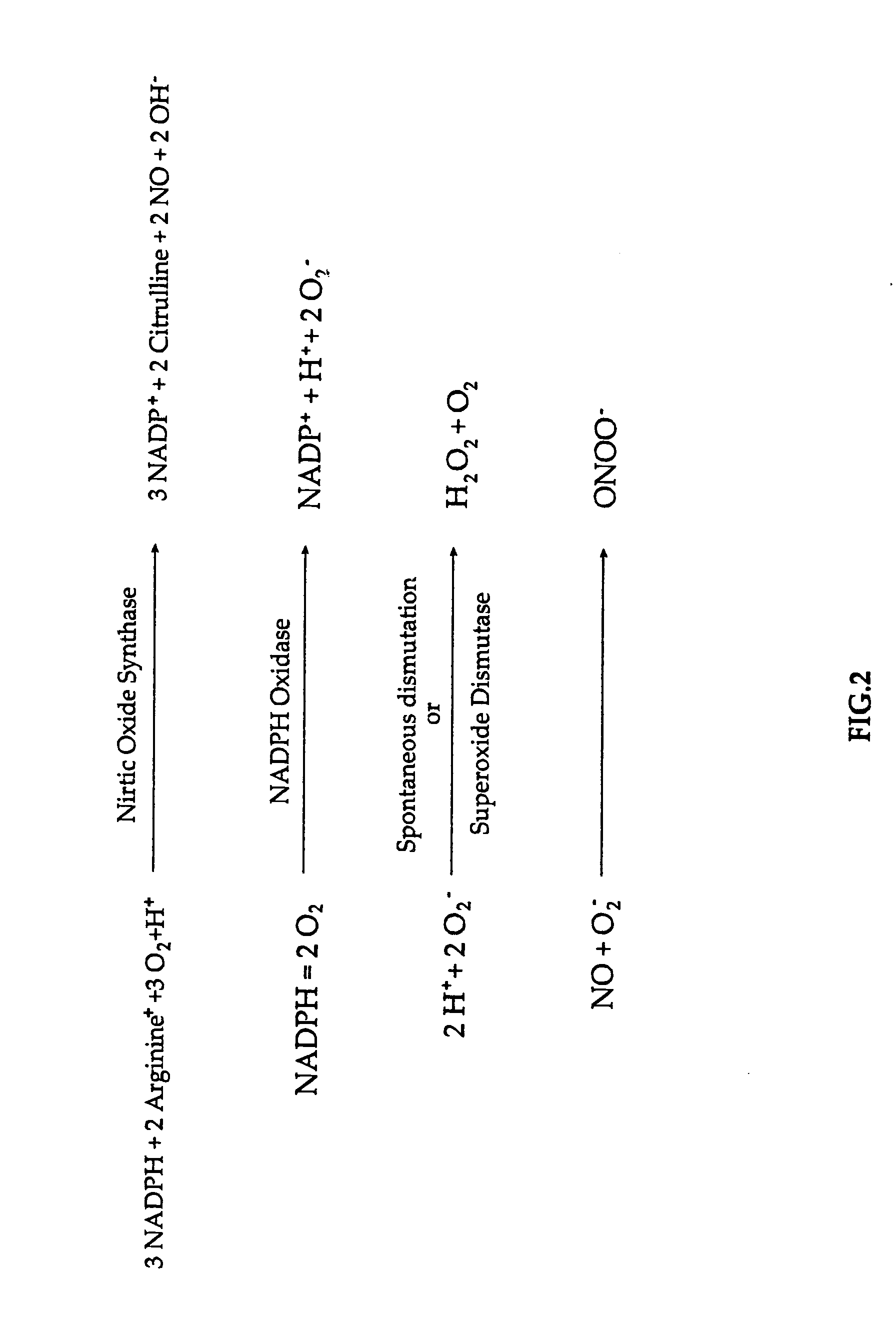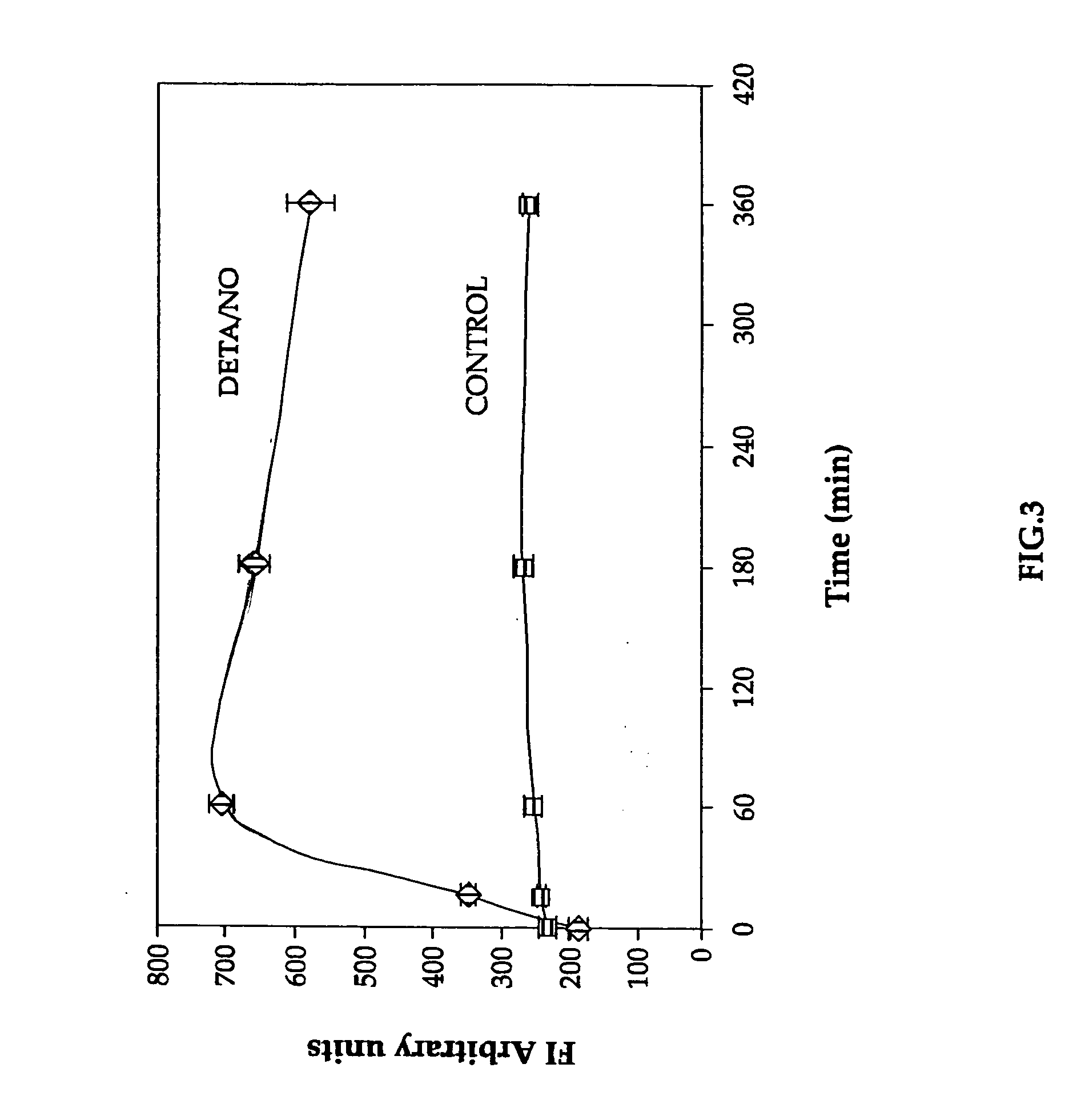Population of cells utilizable for substance detection and methods and devices using same
a technology of substance detection and cell population, applied in the field of cell population, can solve the problems of difficult or impossible field use adaptation, time-consuming, difficult or impossible to adapt to, and failure to provide data on the bioavailability of pollutants, their effects on living systems, and their effects
- Summary
- Abstract
- Description
- Claims
- Application Information
AI Technical Summary
Benefits of technology
Problems solved by technology
Method used
Image
Examples
example 1
Qualification of NOS Indicators
[0151] Materials and Experimental Procedures
[0152] Materials—Diethylene triamine NONOate (DETN / NO) was purchased from Alexis Biochemical (Alexis Corporation, UK). 4,5-diaminofluorescein diacetate (DAF-2DA) was purchased from Calbiochem (La Jolla, Calif.).
[0153] Cells—U937 pro-monocyte cells were obtained from DSMZ-German Collection of Microorganisms and Cell Cultures; Department of Human and Animal Cell Cultures Braunschweig, Germany. U937 cells were maintained in RPMI-1640 medium supplemented with 10% heat-inactivated fetal calf serum, 100 U / mL penicillin, 100 μg / mL streptomycin, 2% glutamine, 2% sodium pyruvate and 2% HEPES (complete medium, all materials were obtained from Biological Industries, Kibbutz Beit Haemek, Israel). Cells were maintained in completely humidified air with 5% CO2 at 37° C. [Kinscherf, R, Claus R, Wagner M, Gehrke C, Kamencic H, Hou D, Nauen O, Schmiedt W, Kovacs G, Pill J, Metz J and Deigner HP (1998) FASEB J. 12(6), 461-4...
example 2
Qualification of ROS Indicators
[0159] Materials and Experimental Procedures
[0160] Materials—Lysophosphatidylcholine (LPC—L-A LPC type V containing primarily palmitic, stearic and oleic acids), hydrogen peroxide (H2O2), superoxide dismutase (SOD), methotrexate (MTX) were obtained from Sigma-Aldrich (St.Louis, Mo., USA).Dihydrorhodamine 123 (DHR123), 2,7-dichlorofluorescein diacetate (DCFDA), dihydroethidium (DHE), were purchased from Calbiochem (La Jolla, Calif.).
[0161] Cells—U937 were described in Example 1 above. THP-1 cells were maintained in RPMI-1640 medium supplemented with 10% heat-inactivated fetal calf serum, 100 U / mL penicillin, 100 μg / mL streptomycin, 2% glutamine (Biological Industries, Kibbutz Beit Haemek, Israel). Cells were maintained in completely humidified air with 5% CO2 at 37° C.
[0162] Measurement of intracellular ROS in live cells—The measurement of intracellular reactive oxygen species (ROS) levels was performed using the DHR123 (1-10 μM), DCFDA(1 μM) or DHE...
example 3
Measuring ROS / INOS Production by Secretory Cells Using a Sensory Cell System
[0171] 100 μl of U937 cells (1.5-2×106 cells / ml in serum free media without phenol red) were incubated in the presence of DHR123 (2 μM) for 15 min at 37° C. and 5% CO2, and then washed 3 times in PBS.
[0172] Activator cells (ROS secreting cells)-100 μl of unstained U937 cells (1.5-2×106 cells / ml in serum free media without phenol red) were incubated in the presence of hydrogen peroxide (50 M) for 15 min at 37° C. and 5% CO2, and then washed 3 times in PBS. It is well established that exogenous H2O2 elicits high intracellular ROS concentrations in U937 monocytes [Zurgil N, Solodeev I, Gilburd B, Shafran Y, Afrimzon E, Avtalion R, Shoenfeld Y, Deutsch M. Cell Biochem Biophys. 2004;40(2):97-113].
[0173] For monitoring ROS levels in sensor cells upon exposure to activated ROS secreting cells, stained sensor cells were loaded on the picowell device and a first (control) measurement was taken. Then, ROS secreting...
PUM
| Property | Measurement | Unit |
|---|---|---|
| molecular weights | aaaaa | aaaaa |
| molecular weights | aaaaa | aaaaa |
| molecular weights | aaaaa | aaaaa |
Abstract
Description
Claims
Application Information
 Login to View More
Login to View More - R&D
- Intellectual Property
- Life Sciences
- Materials
- Tech Scout
- Unparalleled Data Quality
- Higher Quality Content
- 60% Fewer Hallucinations
Browse by: Latest US Patents, China's latest patents, Technical Efficacy Thesaurus, Application Domain, Technology Topic, Popular Technical Reports.
© 2025 PatSnap. All rights reserved.Legal|Privacy policy|Modern Slavery Act Transparency Statement|Sitemap|About US| Contact US: help@patsnap.com



